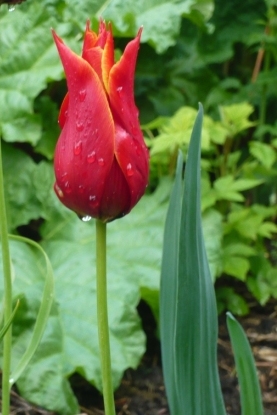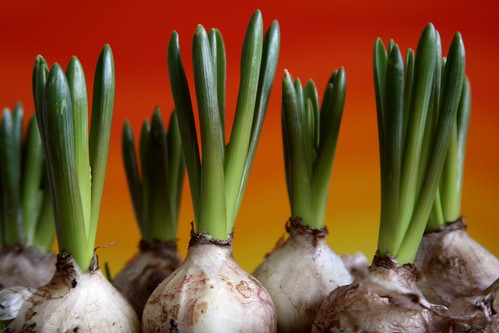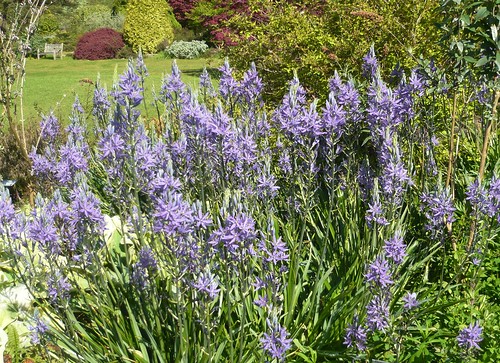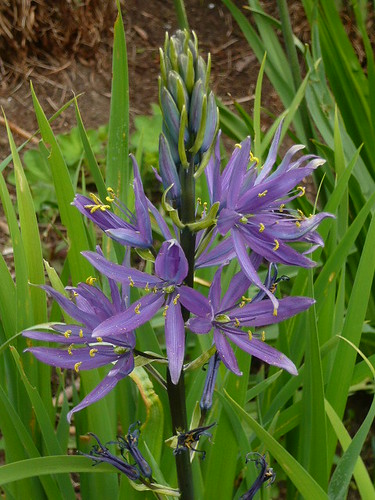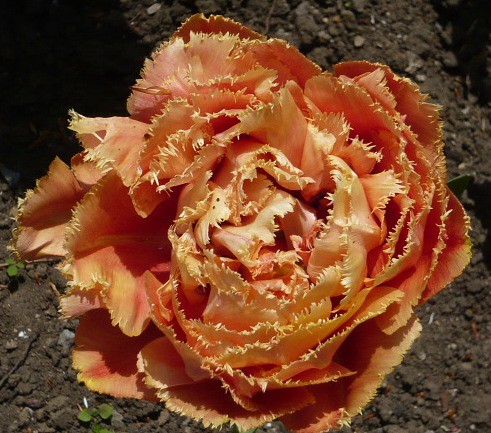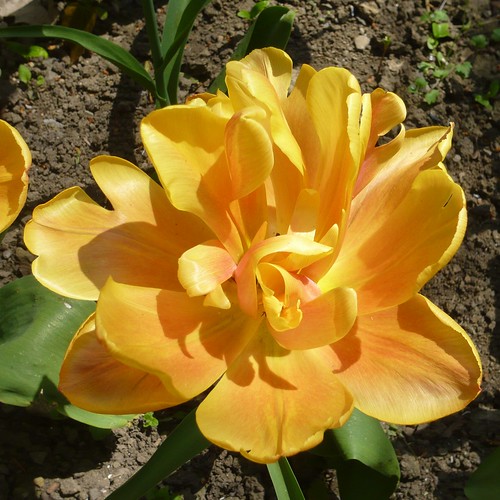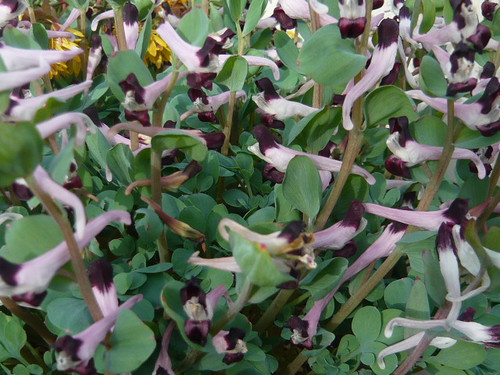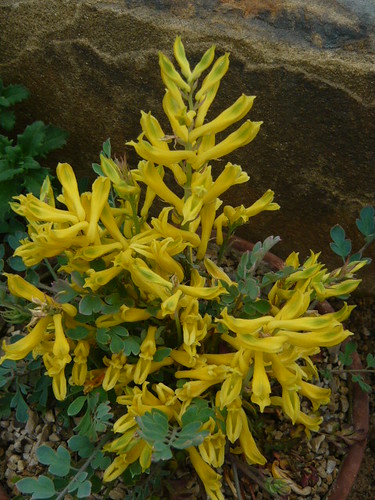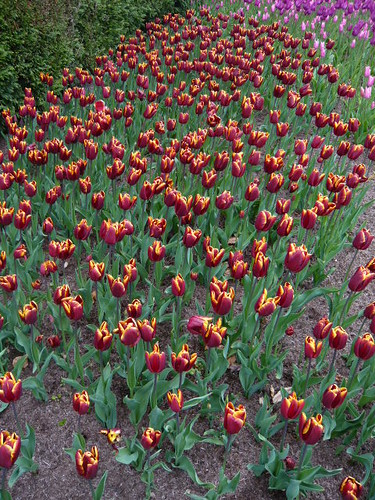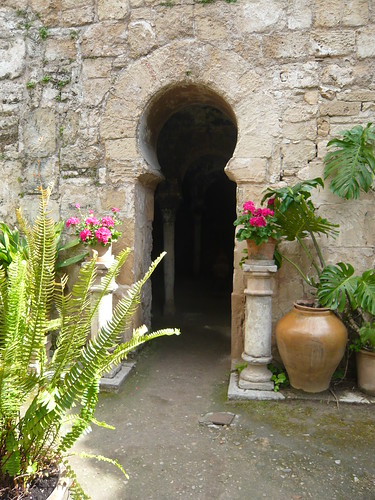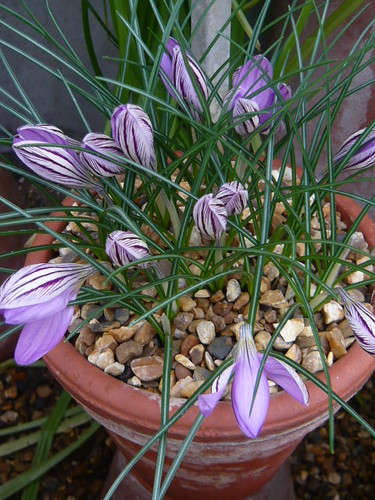Tulip Mad or Mania a Tulip Miscellany
At times I think I have had ‘ Tulip Mania’ this Spring with the number of Tulip posts and pictures I have produced. This year has been an exceptional year and the Tulips in my garden have gone mad themselves with the showy flowers and seemingly infinate variety. The weather must have been kind and clement, the same as the gardener.
This Lily Flowered Tulip is called ‘Queen of Sheba’ and was bought from Parkers 3 years ago. Some of the stock has been lost but I do not dig them up and store them as they are grown just for use as cut flowers.
I am going to dig up the large pots of tulips I planted in the border last November and allow them to die back naturally. The buried pot method helped to contain and frame the tulips and I think it was a success. I will be interested to see if there was enough nutrients available to help get new flowers for next Spring or have I starved them into submission.
Other Lily Tulips I Like
- China Pink a uniform flower with a white base and pink petals.
- Ballerina the best orange I have seen
- White Triumphator with reflexing petals
- For showy I have been recommended Marylin 9white with red stripe) and Ballade looking like Vimto (purple with a white froth)
It looks like I have blown it for a good while now, or at least until I start thumbing through the bulb catalogues for next year.
Variety is the Spice of Tulips
There are tulips of many varieties and families to suit all occasions. Early, mid season and late flowering types are available such as Triumph, Darwin Hybrids, Lily flowered and Fosteriana hybrids but below are some special types or forms worth consideration.
• Crispa the fringed Tulips look like they sound with lace like fringes on the petals. Try ‘Blue Heron’ (really a two tone purple) or the shorter, white ‘Swans Wings’
• Parrot Tulips have deeply feathered, curled, or twisted, single or multi-coloured petals. Many varieties have a green spot at the base of their petals. Some Parrot tulips are sensitive to poor weather and should be planted in a protected spot.
• Multi-flowered tulips are gaining in popularity with 3 -6 flowers on each stem. The bi-colours ‘Spectabile’ and ‘Georgette’ appeal to me.
• Double Paeony Flowered tulips are on my list for next spring. I will put half in a cold greenhouse for cutting and use the rest for bedding. ‘Miranda’ a double Darwin hybrid will be on the list with one of the Dutch bi-colours.
• Green petaled Viriflora tulips have vertical stripes of green on the petals that are otherwise coloured reds and yellows. ‘Esperanto’ a red with green also has striking white edged leaves.
• Triumph Tulips produce cup-shaped flowers on strong, medium-length stems. Average plant height is 10 to 16 inches. This is the largest class of tulips and offers the widest range of flower colors. Triumph tulips are excellent for forcing.
Botanical Tulips and Rock Gardens
Given time to establish themselves botanical tulips can give an outstanding perennial display in the rock garden or rockery.
• Tulip species also known as botanical tulips are natives of Turkey and Asia. Humilis varieties open in a wide star shape like a large crocus. T.Clusiana tend to be yellow bicoloured with red and flower march- April. T. Baalini has pale lemon flowers.
• Greigii Tulips are noted for their brightly-coloured flowers and purple striped or mottled foliage. Plant height varies around 8 inches so stature Greigii tulips are excellent choices for borders or rock gardens. They also colonise well.
• Kaufmanniana Tulips are long-lived perennial tulips. In sunlight, the flowers open fully. The open flowers resemble a star or water lily. Flower colours include white, yellow, pink, and intermediary colours. The foliage is bluish green or chocolate brown striped.
Other Tulip Tips
• For a great display plant the bulbs in a round basket or container that will delineate the area where they will grow and make lifting easy. This spring I saw a great display of circles of tulips in tight formation one colour to a patch.
• Botanical tulips don’t like competition so plant where the leaves won’t get covered by other plants.
• Leave leaves until they become brown and the goodness has gone back into the bulb
• Lift hybrid tulips in early summer and replant in November.
• Plant 6 inches deep or a bit more if the soil is thin and sandy.
• If you can’t bear to cut you prize tulips for the house buy your partner a bunch from a florist.
Tulip Fire and Tulip Aphids
• Rotting bulbs may be due to tulip fire. Destroy all infected bulbs. Avoid high nitrogen fertiliser.
• Before planting or putting into store soak in Bio supercarb ‘carbendazim and allow to dry
• Tulip aphids colonise bulbs in store including gladioli and crocus as well as tulips.
• Remove aphids by hand
• Treat before storing with Sybol
• Tulip grey bulb rot causes bulbs to fail to emerge above ground, or produce severely distorted shoots which then wither and die off. Bulbs turn grey and dry as they rot away to leave only the roots and basal plate. Caused by a fungus that can persist in the soil so burn bulbs and don’t replant for 5 years
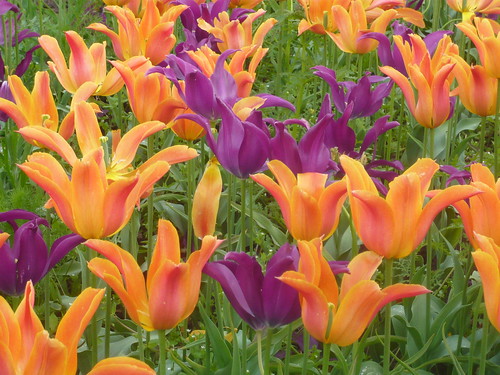
November is a good time to plant Tulips so you still have time to order and buy some more new bulbs. It seems to be a new marketing ploy to sell two or more types of Bulbs together so gardeners can pre-ordained the effects they wish to achieve.
These orange and purple Tulips looked blown but attractive in late May this year at Harlow Carr Gardens.
Tips for Twin Tulips
- Check with your supplier that different bulbs will flower at the same time or the effect will be lost.
- Bulbs from the same series are more likely to flower at the same time as that is how they have been bred.
- Select your own mix of varieties from a good and informative bulb catalogue (or you will end up with pot luck as I do.)
- Plant at the same depth (at least twice the bulbs width) or the depth may affect the flowering time.
I am looking at planting ‘Purple Passion’ a blend from Thompson-Morgan one of our sponsors.
